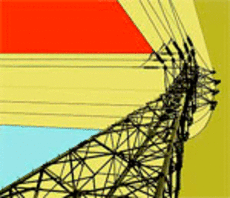IEEE announced this week the ratification of the IEEE 1901 Broadband over Powerline standard, which allows for data rates of 500 Mbps in local area networks such as the home, where it could be one of the systems of choice for delivering information about energy usage back to energy providers and to residents in real time, allowing them to adjust and regulate usage in light of the information.
The standard also could be the basis for distributing entertainment in trains or airplanes—or, at home, for installing a new music playlist in an automobile that’s being charged.
In Xcel’s smart grid city experiment in Boulder, Colo.—admittedly not a general success—BPL has been used in combination with radio links to transmit data from power meters, hot-water heaters, thermostats, and renewable-energy systems. To communicate with the energy provider, the data flows along the power lines for about a kilometer before it’s siphoned off the line and into an optical fiber or cellular-based backhaul system. That system, however, operates at rate of only about 5 Mbps—two orders of magnitude lower than what IEEE 1901 can provide in principle.
The 1901 standard seems destined to join the 1547 family of interconnection standards—the protocols and algorithms governing how to connect up distributed generation resources such as wind and solar as well as distributed storage devices like supercapacitors or battery banks—as one of the really critical smart grid enabling technologies.



